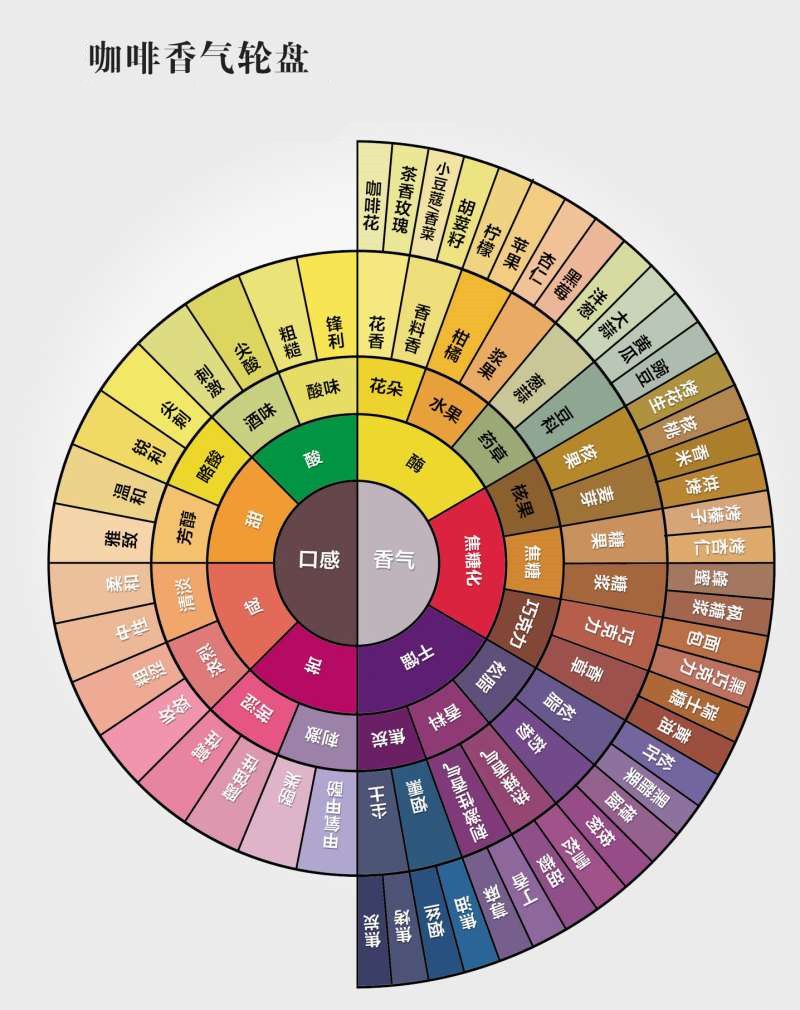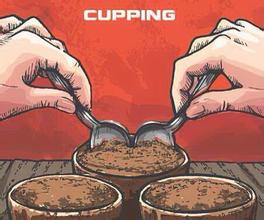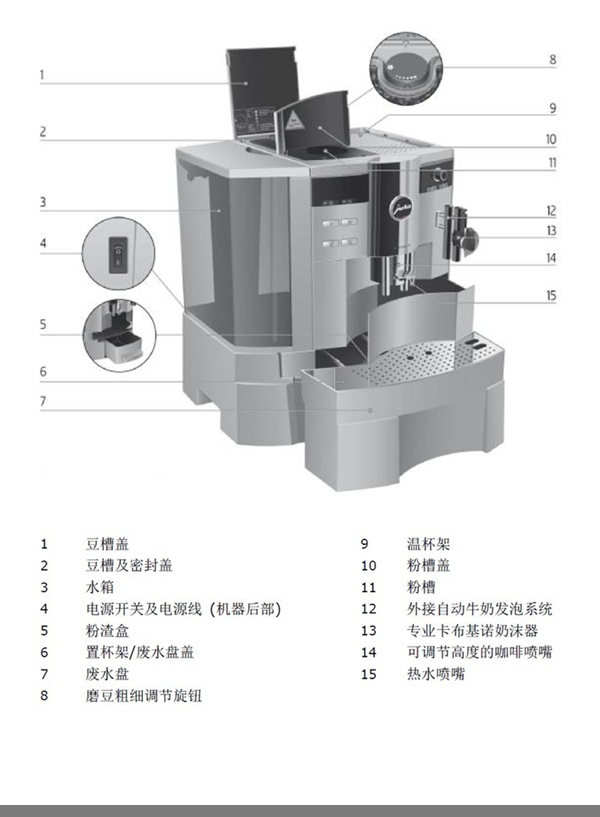The main points of the knowledge of coffee flavor wheel: a detailed analysis of the learning essentials of SCAA coffee flavor wheel

Coffee has only four kinds of water-soluble tastes: sour, sweet, bitter and salty, some sour and sweet, only volatile, which need to be identified by smell; some are non-volatile, only water-soluble, and need to be identified by taste buds; and some sweet and sour ingredients are both volatile and water-soluble, so sour and sweet often show the dual senses of smell and taste. As for bitterness and saltiness, they are not volatile and cannot be smelled with the nose, so they belong to the taste category of taste identification.
The sour, sweet, bitter and salty taste of coffee is closely related to the degree of roasting, so the "taste spectrum" is classified by shallow roasting and deep baking and re-roasting. Coincidentally, the shallow medium-baked "sour and sweet" flavor has lower molecular weight, higher polarity and high water solubility, and is often dissolved in the first half of the extraction. However, the "bitter and salty" flavor has high molecular weight, low polarity and low water solubility, so it is often dissolved in the second half of extraction.
The taste of coffee from light to medium roasting is mainly low molecular weight and medium molecular weight sour and sweet taste, but too many defective beans or improper roasting, even shallow roasting will produce a thankless bitter and salty taste. As for deep baking, it is mainly bitter and salty with high molecular weight. Unless you are familiar with the deep baking methods of traditional drum roasters, it is not easy to break the fate of deep baked beans with salty taste. But deep baking is by no means useless. The rarest deep-baked flavor spectrum is "thick but not bitter, sweet and mellow to moisten the throat". After experiments, it is not a myth. Generally speaking, 70% to 72% of roasted coffee beans are insoluble in water, and the water-soluble flavor ingredients account for only 28% to 30% of the weight of cooked beans. What are the contents of these soluble flavors? the Coffee Cup Tester Handbook, written by Ringer, a senior consultant to SCAA, contains relevant data.
The percentage indicates the weight ratio of each flavor ingredient to the soluble substance of coffee.
According to the above data, the weight proportion of sour, sweet, bitter and salty soluble flavors of coffee cooked beans is obviously the most, accounting for 39% of the soluble substances, followed by bitter substances (264%), salty taste (4%), sour taste (lowest) and not more than 54%. The total is 848%, and the rest unlisted should be flavors with less content. However, Ringer did not specify the baking degree of the sampling, so let's take the cup to measure the usual moderate baking Agtron#55, depending on the baking degree, these values will be different, but as long as the baking degree is within the palatable range, the order of the proportion of the above flavors will not change.
Please do not think that the proportion of sweetness is the highest, and coffee is supposed to be as sweet as honey. in fact, this is not the case. the bitter sour or even salty taste of black coffee can easily interfere with sweetness, which involves the complex relationship between sour, bitter, salty and sweet. Only when the cell walls of raw beans are thick, and the contents of sucrose and amino acids are higher than the average, coupled with perfect baking, sweetness can break away from the other three flavors, "encirclement and suppression", and stand out. So sweetness is the most valuable happy taste of boutique coffee. Sour, sweet, bitter and salty tastes may appear in shallow baking, but in the deep-baked world, organic acids have been completely cracked, and the taste spectrum is simplified to sweet, bitter and salty tastes with higher molecular weight. Start with the shallow baking "taste spectrum", and then re-bake the "taste spectrum".
Source: Beresta's blog
Important Notice :
前街咖啡 FrontStreet Coffee has moved to new addredd:
FrontStreet Coffee Address: 315,Donghua East Road,GuangZhou
Tel:020 38364473
- Prev

Analysis of coffee cup testing knowledge points: introduction of common terms in Chinese and English for coffee cup testing
When testing a cup of coffee, we should distinguish whether the flavor, alcohol thickness, acidity and wet aroma of the coffee are pleasant. Most cup tasters use the following criteria to judge coffee. While tasting the coffee, you should try to discern whether the flavor, body, acidity and aroma of the coffee is pleasant, or unplea
- Next

Introduction of product operation and detailed analysis of cleaning method of Yuri JURA XS90 coffee machine
1. The structure of JURA XS90 automatic coffee machine. Second, the use of JURA XS90 automatic coffee machine. 1. Turn on the switch button on the back of JURA XS90 automatic coffee machine. 2. Add the water tank on the left side of the coffee machine (figure 3 above) to pure water (which water is the best to brew coffee? http://www.cafehelper.com/view-273-1.html).
Related
- What is the meaning of lactic acid fermentation with coffee bean treatment?
- How to judge the state of foam by sound?
- How does the latte pull out the unicorn pattern? Come to get for a little trick to improve the flower pull!
- Will flower pulling affect the taste of the latte?
- Do you know the history of coffee?
- The difference between honey treatment and sun washing what is raisin honey treatment?
- What kind of milk can a novice use to make coffee foam to keep the foam longer? The correct method and skills of milking tutorial sharing
- Why do washed coffee beans taste sour? Flavor characteristics of washed Coffee
- Introduction to the skill of how to practice the size and height of water injection around the circle of hand-brewed coffee
- How do beginners practice coffee flower drawing from scratch?

